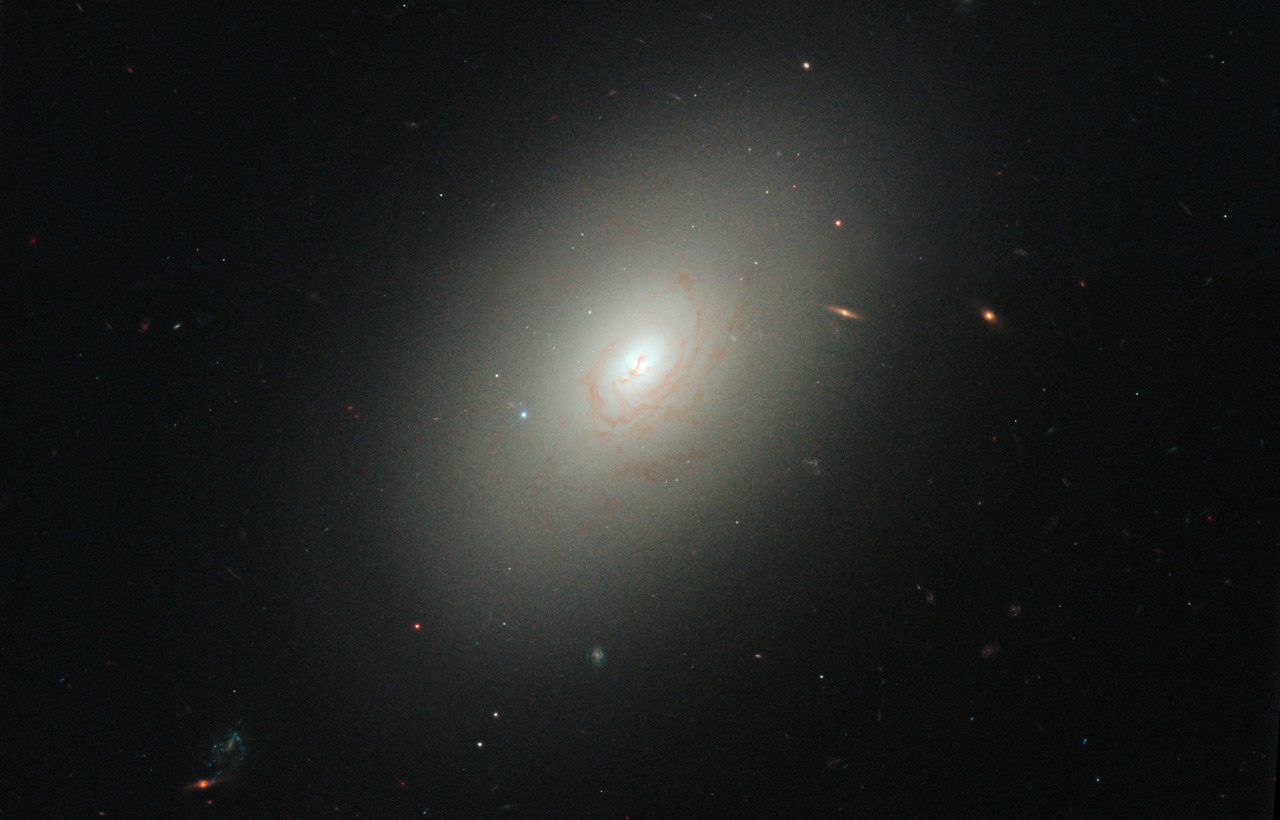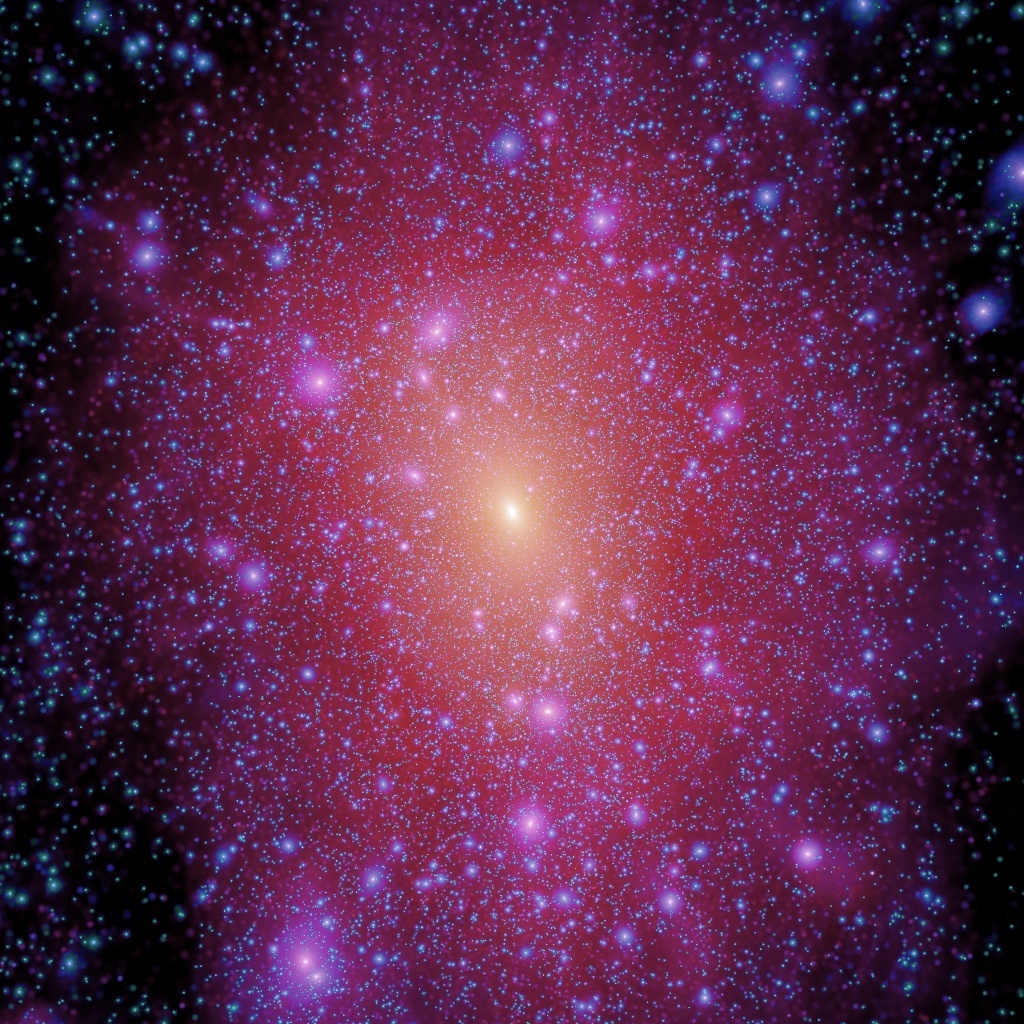12. Gravitation in elliptical galaxies and dark matter halos¶
We have so far only considered mass distributions that are either spherical or highly flattened into a disk. However, the mass distributions of two important types of galactic structures fall somewhere in between these two extremes: elliptical galaxies and dark matter halos. Observations of elliptical galaxies show them to be flattened spheroids or ellipsoids and dark matter halos—which we can simulate but not directly observe—are believed to be qualitatively similar to this. Figure 12.1 shows an example elliptical galaxy and a simulated Milky-Way-like dark-matter halo.
Figure 12.1: Elliptical galaxy (left; NASA/ESA Hubble Space telescope) and a simulated, Milky-Way-like dark-matter halo (Springel et al. 2008a).
The elliptical galaxy NGC 4150 on the left conforms to the expectation for an elliptical galaxy, being a largely featureless blob of light (however, there are some dust lanes indicative of recent star formation). What is of course most striking about the simulated dark-matter halo on the right is the large amount of small-scale structure in the mass distribution (known as subhalos), but most of the mass is in fact contained in a smooth ellipsoidal distribution.
As we will discuss in this chapter, elliptical galaxies and dark-matter halos are either mildly flattened along a single axis, in which case they are axisymmetric with the consequential conservation of the angular momentum along this axis, or along two axes, when they are generally referred to as triaxial. In this part, we discuss how to compute the gravitational potential due to such mass distributions, the properties of orbits in these potentials, and general methods for studying the equilibrium of triaxial models.



